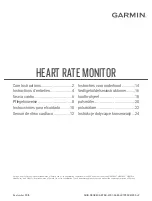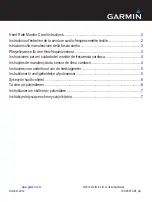
14
ENGLISH
Connecting Peripherals
USB Device connection
The USB port on the product functions as a USB hub.
NOTE
•
It is recommended you install all Windows Updates to keep your Windows up-to-date before connecting to
the product for use.
•
Peripheral devices are sold separately.
•
A keyboard, mouse, or USB device can be connected to the USB port.
•
The charging speed may vary depending on the device.
•
To use the monitor’s downstream USB port, connection to the host PC must be established by using a USB C-C
or USB C-A cable for the USB-C port, or a USB B-A cable for the USB-B port.
•
When the USB C-C cable is connected between Upstream port of monitor and Host PC, the Downstream port
of monitor support USB 2.0 device.
•
When a USB C-A or USB B-A cable is connected to the monitor’s upstream port and host PC, USB 3.0 devices
are supported by the monitor’s downstream port. However, the host PC must support USB 3.0.
CAUTION
•
Cautions when using a USB device.
-
A USB device with an automatic recognition program installed, or that uses its own driver, may not be
recognized.
-
Some USB devices may not be supported or may not work properly.
-
It is recommended to use a USB hub or hard disk drive with power supplied. (If the power supply is not
adequate, the USB device may not be recognized properly.)
Headphones Connection
Connect peripherals to the monitor via the headphones port.
NOTE
•
Peripheral devices are sold separately.
•
Depending on the audio settings of the PC and external device, headphones and speaker functions may be
limited.
•
If you use angled earphones, it may cause a problem with connecting another external device to the monitor.
Therefore, it is recommended to use straight earphones.
Angled
Straight
(Recommend)















































